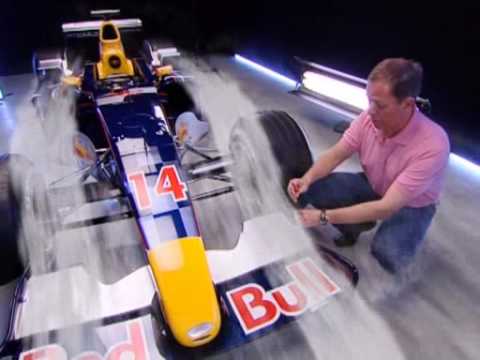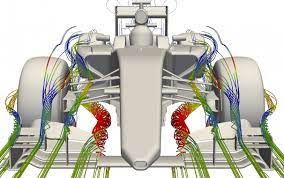Get ready to feel the pulse-pounding excitement of Formula 1 racing like never before with our latest article, “From Design to Checkered Flag: Understanding the Aerodynamics Engineer in F1.”
This thrilling piece takes you on a journey through the high-stakes world of F1 racing and unveils the secrets behind the sleek designs and incredible speeds that make this sport so exhilarating. As you delve into the world of F1 racing, you’ll discover the pivotal role that skilled aerodynamics engineers play in shaping the outcome of each race.
With their expertise in wind tunnel testing, computational fluid dynamics, and cutting-edge materials, these engineers work tirelessly to design the fastest and most efficient cars possible, giving their teams an edge on the track.
From the drawing board to the checkered flag, our article will take you behind the scenes of F1 racing and give you a newfound appreciation for the skill and dedication of these engineers.
Join us for “From Design to Checkered Flag: Understanding the Aerodynamics Engineer in F1.” Don’t miss out on this captivating journey through the world of F1 racing.
What Does An F1 Aerodynamics Engineer Do?

These skilled engineers play a pivotal role in shaping the outcome of each race. They work tirelessly to design cars that can cut through the air with the least amount of resistance, allowing the drivers to reach incredible speeds and maintain control on the track.
In Formula 1 racing, the aerodynamics of the car plays a significant role in its performance. And it’s the Aerodynamics Engineer who is responsible for designing and developing the car’s aerodynamic features.
The Aerodynamics Engineer’s role involves creating a car that is optimized for speed and performance while adhering to the strict regulations set by the FIA.
From wind tunnel testing to computational fluid dynamics, aerodynamics engineers use cutting-edge technology to create the perfect balance between speed and stability.
They analyze every aspect of the car’s design, from the angle of the wings to the shape of the nose, to ensure that the car can handle the high speeds and tight corners of an F1 race.
The Engineers Need To Have A Broad Understanding
But it’s not just about the technology. These engineers must also have a keen eye for detail and a deep understanding of the physics of racing.
They work closely with the drivers and the rest of the team to fine-tune the car’s performance, ensuring that it can handle any challenge that comes its way. So what does an F1 aerodynamics engineer do?
They design the fastest and most efficient cars on the track, giving their teams an edge in the high-stakes world of F1 racing.
They use cutting-edge technology and a deep understanding of physics to create the perfect balance between speed and stability.
And they work tirelessly to fine-tune the car’s performance, ensuring that it can handle any challenge that comes its way.
F1 Aerodynamics Engineer Work Closely With The Whole Team
They work closely with other engineers, including the Powertrain Engineer and Performance Engineer, to ensure that the car is delivering the required performance.
The Aerodynamics Engineer uses advanced simulation tools to model the car’s aerodynamics and test different designs. They must ensure that the car is generating enough downforce to keep it stable at high speeds while minimizing drag to maximize its speed on the straightaways.
The aerodynamic features of the car include the front wing, rear wing, diffuser, and sidepods. The front wing is responsible for creating downforce and directing air to the underbody of the car.
The rear wing provides additional downforce and helps to balance the car at high speeds. The diffuser is located under the car and helps to create a low-pressure area, which increases downforce.
The sidepods are located on either side of the car and help to direct air to the rear wing. The Aerodynamics Engineer must also consider the effect of the car’s aerodynamics on the tires.
They must ensure that the tires are receiving enough airflow to keep them cool and prevent overheating, which can affect the car’s performance. Once the car’s aerodynamics have been designed and tested, the Aerodynamics Engineer works with the Performance Engineer to fine-tune the car’s performance during practice sessions and races.
They monitor the car’s performance and make any necessary adjustments to maximize its speed and stability. In addition to designing and developing the aerodynamics of the car, the Aerodynamics Engineer is also responsible for maintaining it.
The F1 Aerodynamics Engineer Must Be A Problem Solver

They must ensure that the aerodynamic features are working as intended and that any issues that arise are quickly resolved.
Overall, the Aerodynamics Engineer plays a crucial role in the success of a Formula 1 team.
y designing and developing the car’s aerodynamics, they help to ensure that the team’s car is performing at its best and has the best chance of winning races.
F1 Aerodynamics Engineer Qualifications
A degree in mechanical engineering, aerospace engineering, or a related field is usually required. Some teams may also prefer candidates with a master’s degree or a PhD. Aerodynamics engineers also need to have good design skills, computer skills, and testing skills.
They also need to have experience working with F1 aerodynamic components and systems, such as wind tunnels, CFD software, and 3D printing.
F1 Aerodynamics Engineer Salary
Possible ranges for the annual salary
$80,000 – $160,000
These are only rough estimates and may not reflect the actual salary in F1. The salary may also depend on other factors such as bonuses, incentives, and benefits. F1 engineers also have to work long hours and travel frequently, which may affect their quality of life.
Other Exciting Opportunities in F1

